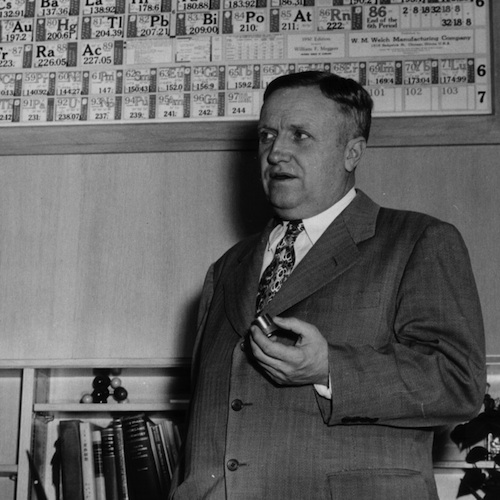
From the first controlled nuclear reaction to discovering new elements, the Department of Chemistry at Iowa State University has been regarded as one of the best in the nation for more than a century.
Here, a look back at some of our most notable professors and alumni, and a snapshot of current leaders.
1919: Henry Gilman
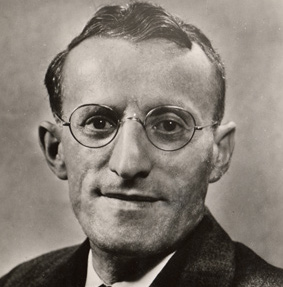
Henry Gilman, known as the "father of organometallic chemistry," moves to Ames to become the assistant professor of organic chemistry at Iowa State College. In 1923 at the age of 30, Gilman is promoted to full Professor and teaches all the organic chemistry courses at Iowa State College. He develops the modest Chemistry Department into one of the finest in the United States, with visionary research into Organometallic Chemistry. His main area of research in organometallic chemistry builds a reputation for Iowa State as a pioneer in the field. He discovers the Gilman reagent, another name for organocopper compounds used for carbon-carbon bond formation in organic synthesis, which bears his name. Gilman has high expectations for his graduate students, and it often takes them more than twice as long as the norm to earn their degrees. They are expected to work in the research lab well into the night and on weekends. He does not assign research projects for his graduate students, but instead pushes them to produce a series of preparations. Students write short publications that spark ideas about additional experiments to perform, drawing all the material together to form a central thesis. In 1947, due to a combination of glaucoma and detachment of a retina, Gilman becomes blind in one eye and loses most of his vision in the other. He is forced to rely on his wife and students to act as his eyes, to read and write for him. Remarkably, he continues much of his work and never lets his loss of sight hinder his skills - it could be argued that the majority of Gilman’s work was done after 1947. Although the usual retirement age is 70, Gilman choses not to retire from Iowa State University and remained active in research until 1975 when he is 82 years old. In 1973, the chemistry building at ISU is named Henry Gilman Hall.
1937: Frank Spedding

Frank Spedding, the “founding father of the nuclear age,” joins ISU faculty. One of the nation’s principal nuclear chemists, he directs the chemistry phase of the Manhattan Project during World War II, which leads to the world’s first controlled nuclear reaction. He helps create the technology that makes the production of Uranium 235 possible, which is used in the bomb dropped on Hiroshima, Japan, in 1945. He is Iowa State’s second member of the National Academy of Sciences and the first director of the Ames Laboratory. Spedding remains an ISU faculty member until his retirement in 1968.
1942: Harley Wilhelm
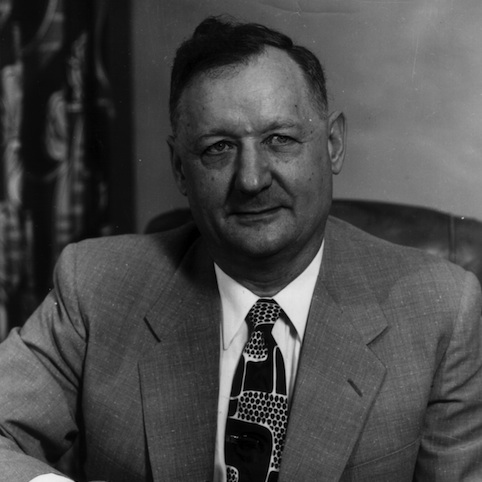
Harley Wilhelm receives his Ph.D. from ISU and begins working with the university’s atomic energy research staff. He assists the Manhattan Project during World War II by creating a process for casting large ingots of high-purity uranium and thorium metals at a reduced cost. His invention is still used today. In 1945, he is named associate director of the Ames Laboratory, a title he holds until 1966.
1947: Velmer Fassel
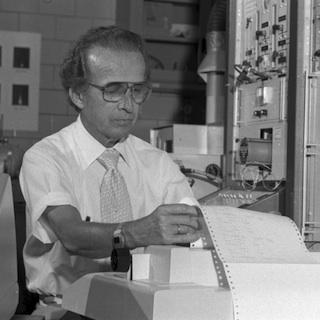
Velmer Fassel earns his Ph.D. in chemistry from ISU and later becomes internationally known for developing an analytical process called “inductively coupled plasma-atomic emission spectroscopy (ICP-AES),” now used for chemical analysis in almost every research laboratory in the world.
1951: Darleane Hoffman
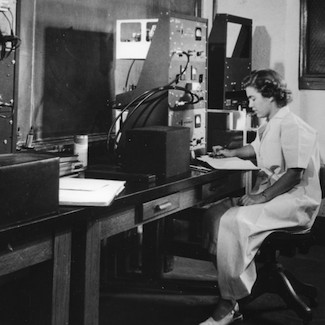
Darleane C. Hoffman (chemistry and math, B.S. ’48, chemistry, Ph.D. ’51) earns her Ph.D. in nuclear chemistry from ISU. In 1974, she is among the researchers who confirm the existence of Seaborgium, element 106, a radioactive synthetic metal used in research today. In 1997, she is awarded the National Medal of Science.
1963: Karl Gschneidner, Jr.
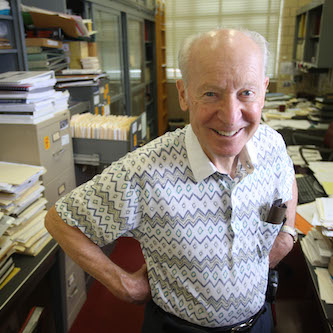
After earning his Ph.D., Karl Gschneidner, Jr. joins his alma mater as associate professor of Metallurgy. Three years later, he becomes the Director of the Rare-earth Information Center and Institute for Physical Research and Technology at Iowa State, a position he holds for 30 years. Known as “Mr. Rare Earth,” Gschneidner continues to make discoveries at ISU today and develops magnetic refrigeration technology.
1970: James W. Mitchell
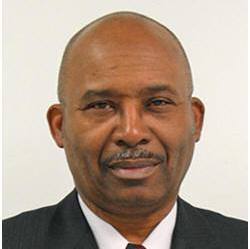
James W. Mitchell earns his Ph.D. in chemistry from ISU. His doctoral thesis focuses on analytical chemistry and analyzing the characteristics and composition of matter. After receiving his doctorate, Mitchell joins AT&T Bell Laboratories in New Jersey and becomes one of the founders of the Association of Black Laboratory Employees. In 1994, he’s named ISU’s first George Washington Carver Professor. Today, he serves as Vice President of the Materials Research Laboratory at Bell Laboratories, Lucent Technologies.
1983: Patricia Thiel
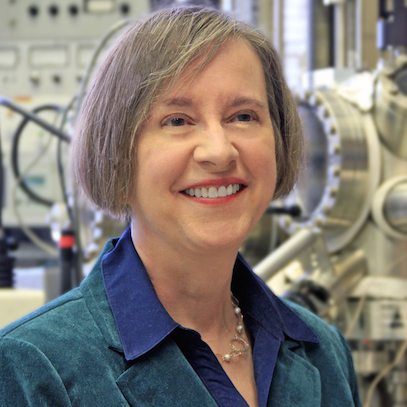
Patricia Thiel joins the Ames Laboratory and Department of Chemistry. In 1991, she receives one of the first 100 National Science Foundation Women in Science and Engineering Awards. Since arriving at ISU, her work has greatly advanced the understanding of quasicrystals and nanoparticles on metal and semiconductor surfaces, which has contributed to advancements in many areas of society including energy production, health care and manufacturing. Today, she is a Distinguished Professor of Chemistry.
1994: Edward Yeung
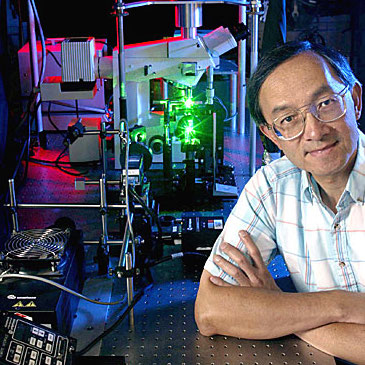
Edward Yeung, former chemistry professor, becomes the first person to quantitatively analyze the chemical contents of a single human red blood cell. This development could lead to improved detection of AIDS, cancer, and genetic diseases such as Alzheimer’s, muscular dystrophy, and Down’s syndrome.
2004: Edward Yu
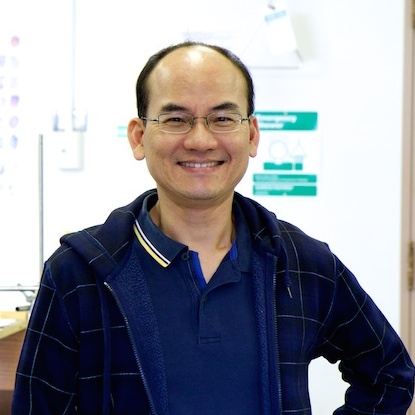
Edward Yu joins the chemistry faculty at ISU. Currently the John D. Corbett Professor of Chemistry (previously held by Thiel), Yu’s research is leading to new strategies for fighting bacterial infections in human cells.
2005: Malika Jeffries-EL
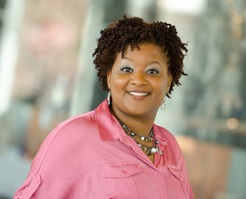
Malika Jeffries-EL joins the chemistry faculty at ISU. Her research focuses on the development of organic semiconductors – materials that combine the processing properties of polymers with the electronic properties of semiconductors. She is currently a Martin Luther King, Jr. Visiting Professor at MIT.
2013: John D. Corbett
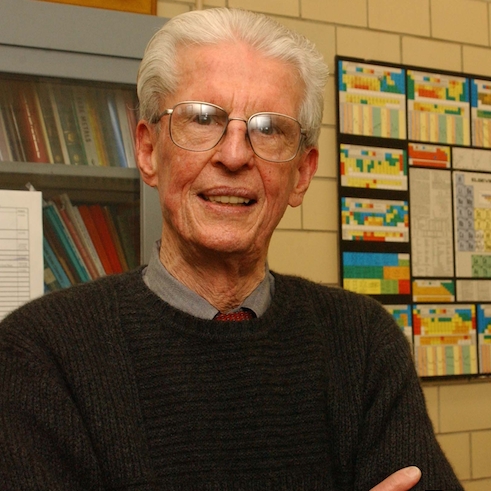
John D. Corbett, Distinguished Professor of Chemistry, passes away after serving more than 60 years as ISU faculty. Until his death at 87, Corbett went to his office daily. Corbett received virtually every major award in his field, notably the Humboldt Prize (1985), membership in the National Academy of Sciences (1992) and the Distinguished Service Award from the American Chemical Society (ACS) (2000). In 2007 he established an endowed professorship at ISU in his name.
2014: Thomas J. Greenbowe
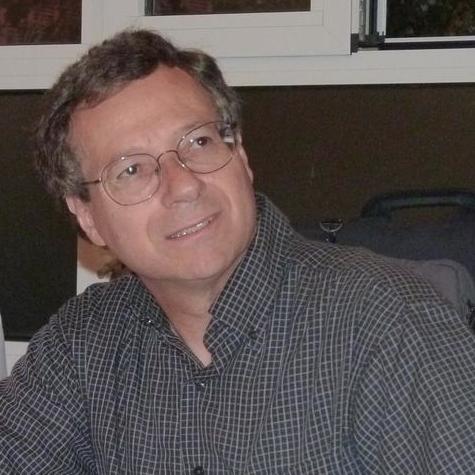
The American Chemical Society awards Morrill Professor Thomas J. Greenbowe the James Flack Norris Award for Outstanding Achievement in Teaching Chemistry, one of the oldest national awards of the ACS. He is a 2013 American Chemical Society Fellow, and a 2013 ISU Morrill Professor. He is currently serving as co-chair of the 2015 General Chemistry Conceptual Exam Committee.